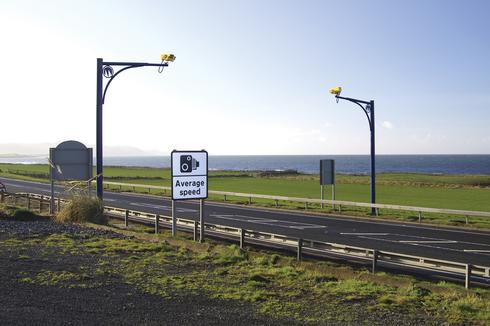Vysionics Wins Europes Longest Speed Enforcement Project

Vysionics ITS are to deliver Europe’s longest average speed enforcement system to the A9 in Scotland, covering 220 kilometres of road.
Transport Scotland have recently announced that as part of a raft of measures to increase safety along the A9, a number of SPECS3 average speed cameras will be installed between Dunblane and Inverness. These cameras will be installed during 2014, to support the long term safety strategy which includes dualling the Perth to Inverness section of the route by 2025.
The A9 is a key strategic route in Scotland, running from the central belt through to the highlands. The existing configuration is a mixture of single and dual carriageway, carrying a high proportion of HGV traffic. The current national speed limit for HGV’s over 7.5t is 40mph on the single carriageway sections, which can often lead to traffic queues and driver frustration leading in turn to poor driver behaviour. Part of the overall strategy to make the route safer, improve journey time reliability and reduce frustration is to increase the HGV speed limit to 50mph on the single carriageway sections between Perth and Inverness. This three year trial will be supported by a network of SPECS3 average speed cameras.
A SPECS3 network will also be installed on the dual carriageway section between Dunblane and Perth principally targeting overall driver behaviour but also with a focus around the key junctions.
SPECS3 is an ANPR based average speed enforcement system. Camera installations, supported by appropriate signage will be placed at between 5 and 7km apart, mounted on highly distinctive SPECS columns. This ensures that drivers regularly perceive that enforcement is taking place, which has a strong speeding deterrent effect.
The cameras can operate in complete darkness, thanks to the use of infra-red illumination. The lack of visible lighting or flashes is particularly beneficial in the Caingorm National Park, where visible lighting is not permitted due to its Dark Sky Reserve status. Offence data is collected at the roadside and communicated wirelessly back to a remote central server, allowing for enforcement links to be flexibly managed from the Safety Camera Partnership back office.
SPECS cameras have been widely used around the UK with more than 60 permanent sites to date. At sites where they have been installed as part of a casualty reduction scheme, Killed or Seriously Injured (KSI) figures have reduced by on average more than 70%. In addition, traffic flows improve, resulting in improved journey reliability and low offence levels.
Installation began in March 2014 and is due to be completed in October 2014.

